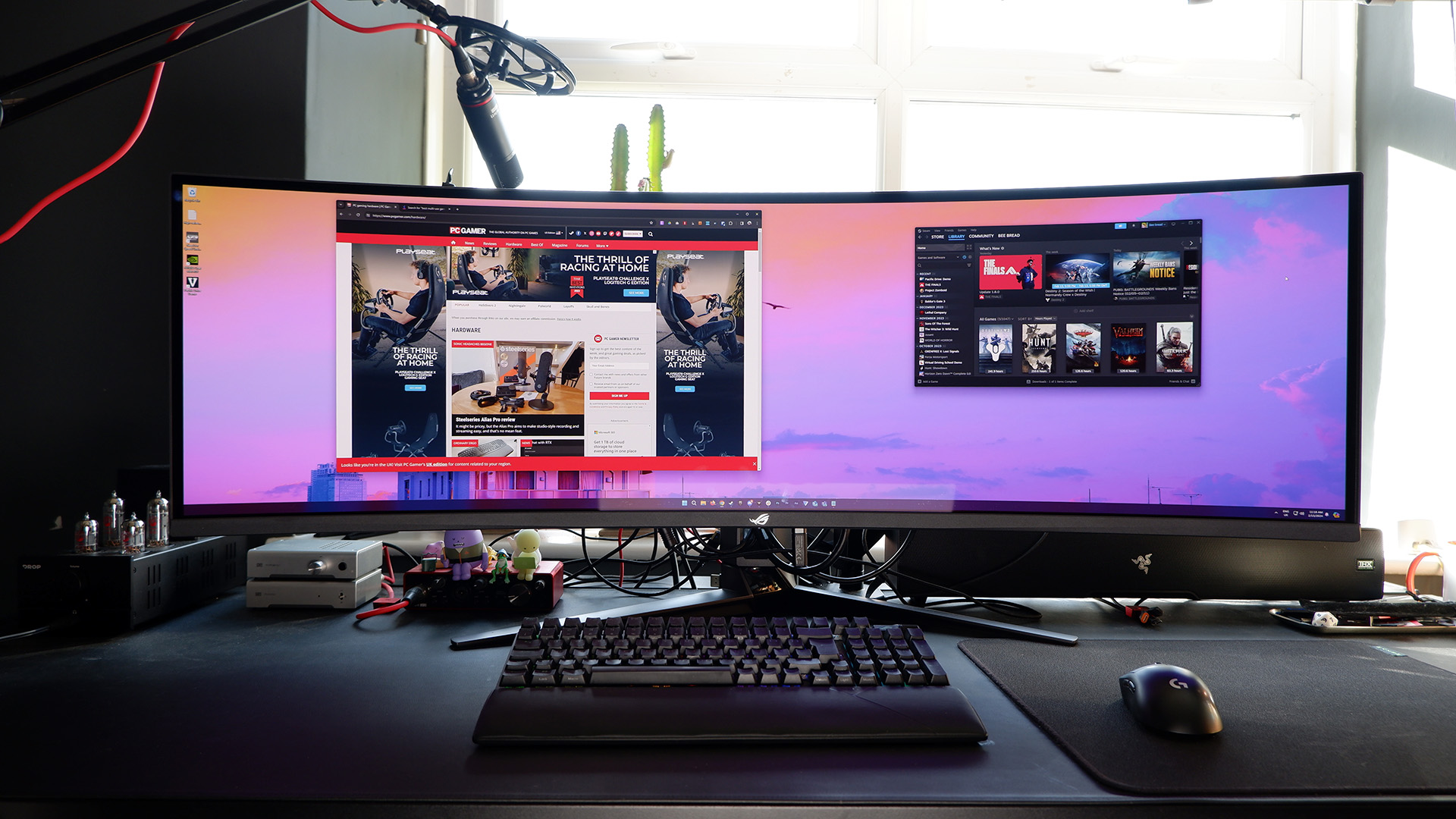
The promise of vibrant worlds strewn across a 49-inch ultrawide OLED is what a PC gamer's dreams are made of. The Asus ROG Swift OLED PG49WCD makes good on that promise. It's a mammoth monitor capable of enveloping your entire vision with whatever game you choose to play on it (providing it supports ultrawide resolutions). It's absolutely glorious. For gaming, at least.
If you think the PG49WCD with its 5120 x 1440 resolution panel is huge, you should see the box it came in. It's a monument to this monitor's absurd breadth. The monitor's 49-inch QD-OLED panel is snugly fit inside alongside a three-legged monitor stand, a couple of cables, and a VESA mount kit. The screen itself isn't quite as thin as some QD-OLED TVs out of Samsung, which makes this monitor easier to set up without damaging the panel. That said, I would recommend two people tackle putting this together, considering the price.
The ROG Swift OLED PG49WCD is priced at $1,499. That's more than even some large QD-OLED TVs, such as Samsung's S95B that I've close by for comparison. What you get here is much more tailored to the PC gaming experience than your average television, however.
The first noticeable difference is you're getting a proper gaming monitor stand—one that swivels, moves up/down, and tilts. This monitor is made of quite creaky plastic, which you only really notice when you do move it around, but otherwise, it's a fairly shallow stand that doesn't get too in the way of a gaming keyboard placed in front of it. Asus has also packed in lots of connectivity on the rear of the panel, including a USB hub. I want to call this out as the addition of a central USB Type-A port on the underside center of the screen and one facing upwards on the right rear is a stroke of genius. These are incredibly handy for the odd charging cable or USB stick—more of this please, monitor manufacturers.
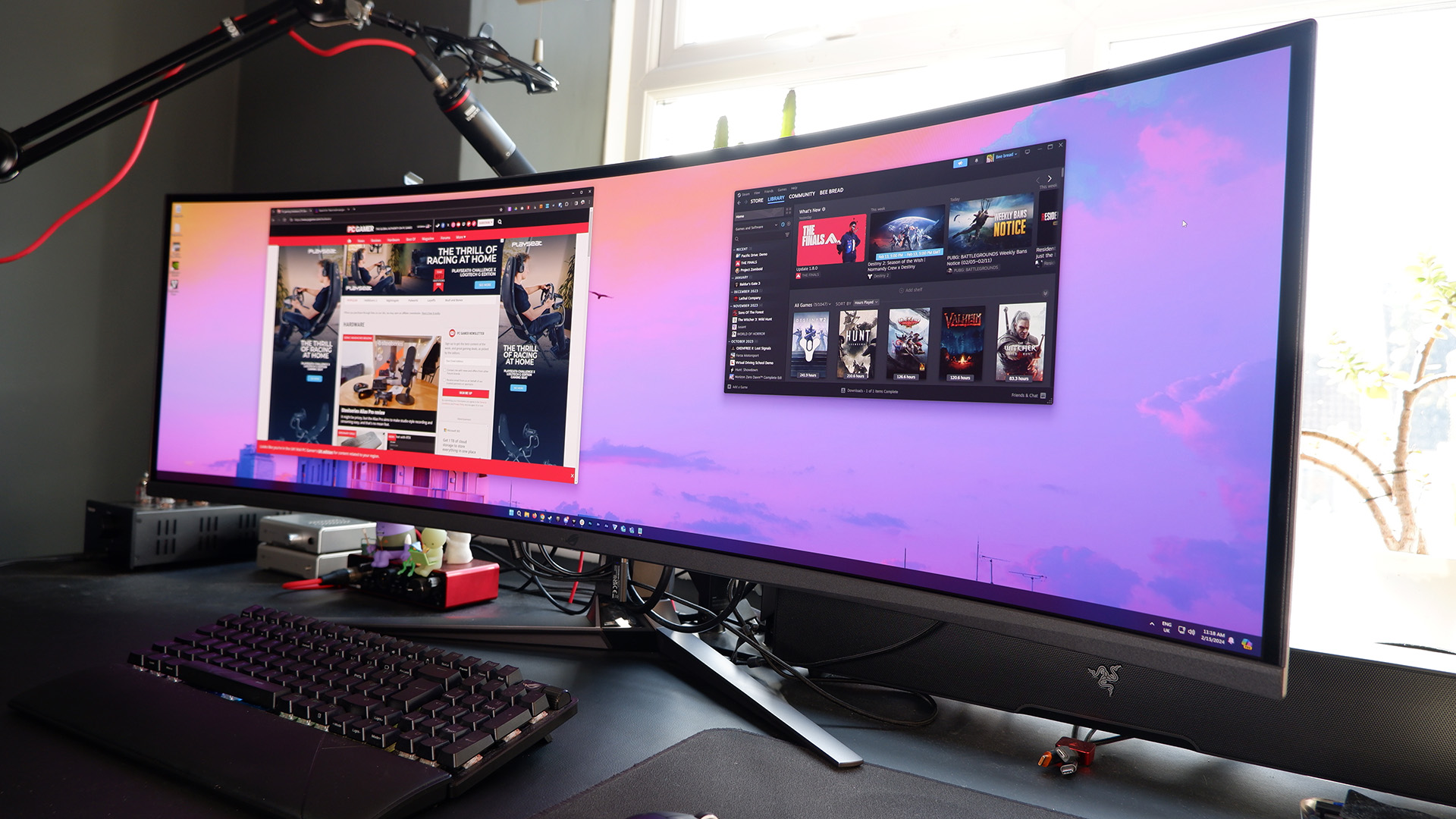
Screen size: 49-inch
Aspect ratio: 32:9
Resolution: 5120 x 1440
Brightness: 250 nits @ 100% APL, 1000 nits max
Colour coverage: 99% DCI-P3
Response time: 0.03 ms
Refresh rate: 144 Hz
Contrast ratio: 1.5M:1
Features: QD-OLED panel, G-Sync Compatible, 1800R curve
Connectivity: 1x DisplayPort 1.4, 1x HDMI 2.1, 1x USB-C (90 W power delivery), USB hub (4x Type-A)
Price: $1,499 | £1,399
Onto the screen itself and you'll be greeted with a spec sheet to knock your socks off. Asus is brandishing a 0.03ms response time alongside a 144Hz refresh rate. You'll find that exact response time plastered on most OLED gaming monitors today yet it easily trumps anything a more traditional LCD panel can deliver.
I ran a few GtG response time tests myself on this monitor and I ended up with a response time of around 0.1ms average and 0.2ms max, though it was almost always 0.1ms and often down to around the 0.015ms mark. An OLED is frighteningly fast compared to most other types of gaming monitors, and with G-Sync compatibility in tow, the PG49WCD is an absolute beast for gaming.
To put it plainly, the PG49WCD produces an absolutely gorgeous picture. This monitor delivers every bit of the OLED picture I've come to adore these past few years—the deepest blacks, vibrant splashes of colour, and the ability to entirely dominate your vision. I've been playing the Steam Next Fest demo for Pacific Drive on the PG49WCD, which is fully compatible with the 32:9 aspect ratio, and it looks absolutely stunning. You may find a few games don't want to stretch to the entire width of the 32:9, though a good many do.
Providing you can feed the seven million pixels plus with a decent frame rate, the PG49WCD is a wonderfully smooth and snappy panel to play on.
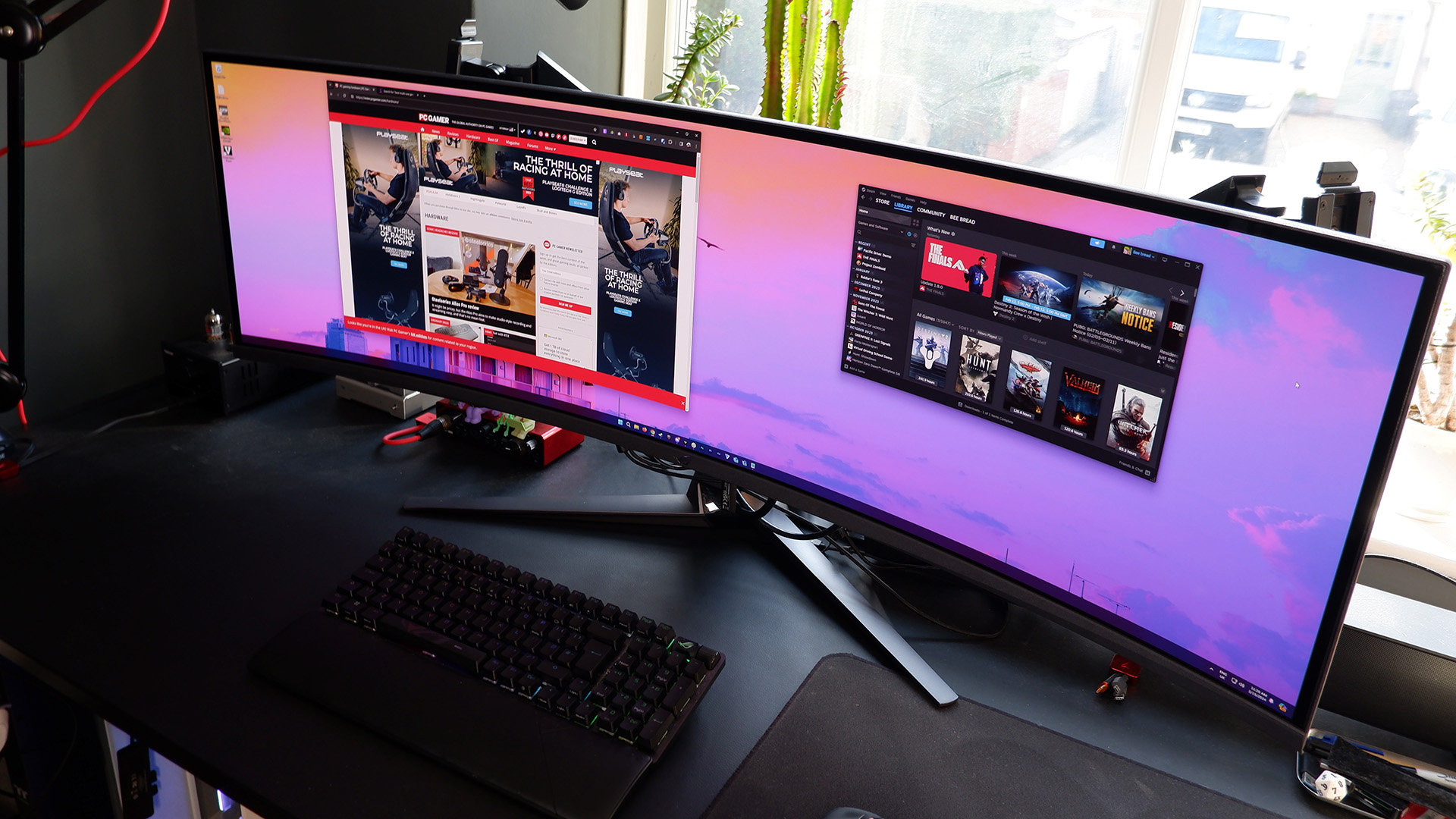
What's good about an ultrawide monitor such as this is it's surprisingly not as demanding on a graphics card—it appears to have much more screen than a 4K gaming monitor but it's made up of 11% fewer pixels. A high-end graphics card is still a requirement for the ROG Swift OLED PG49WCD, but you'll get higher frame rates out of it.
The ROG Swift OLED PG49WCD brandishes a 1000 nits brightness rating. That's the peak brightness, usually for an area covering only 3% of the screen's entire size. For the entire screen space lit up all at once, you're looking at around 250 nits—more in line with your traditional LCD gaming monitor. Fullscreen brightness isn't the strong suit of any OLED gaming monitor right now, you're better off with a Mini-LED for eye-searing levels of luminance. The QD-OLED in this monitor has generally been on the brighter side than some of the first LG OLEDs we've reviewed previously, though the OLED gaming monitor market is changing rapidly
Below: Gamma testing on the Asus ROG Swift OLED PG49WCD. A gamma of 2.2 is the usual target for each stage, and any deviation can result in an image that appears over/under-exposed.
We've barely the first wave of OLEDs and the PG49WCD already features a 'Next-gen' QD-OLED panel replete with a new and improved sub-pixel layout. This is aimed at solving an issue present on many OLEDs: colour fringing on text.
For anyone unfamiliar with sub-pixels: each pixel on a modern monitor is (usually) made up of red, green, and blue sub-pixels, the layout of which differs between panel designs. Traditionally, these come in either RGB or BGR vertical striped layouts, and that works well for clear-cut text. A QD-OLED panel, however, uses Quantum Dots (hence the QD) leading to a non-standard 'triangular' sub-pixel layout, where the different colour sub-pixels vary in size (that's actually how Quantum Dots work to produce different wavelengths). This can, and does, lead to display issues with finer details on the desktop, most notably with text.
OLEDs are primarily designed for the TV market which means nailing tiny text hasn't been necessarily high on the agenda for Samsung, the manufacturer of all QD-OLED panels. Yet when transplanting a TV panel to a gaming monitor, such as the PG49WCD, it becomes a bit more of a problem. Us PC gamers look at tiny text all the time and sit really close to the screen too—much closer than I hope most would stare at a TV in a living room.
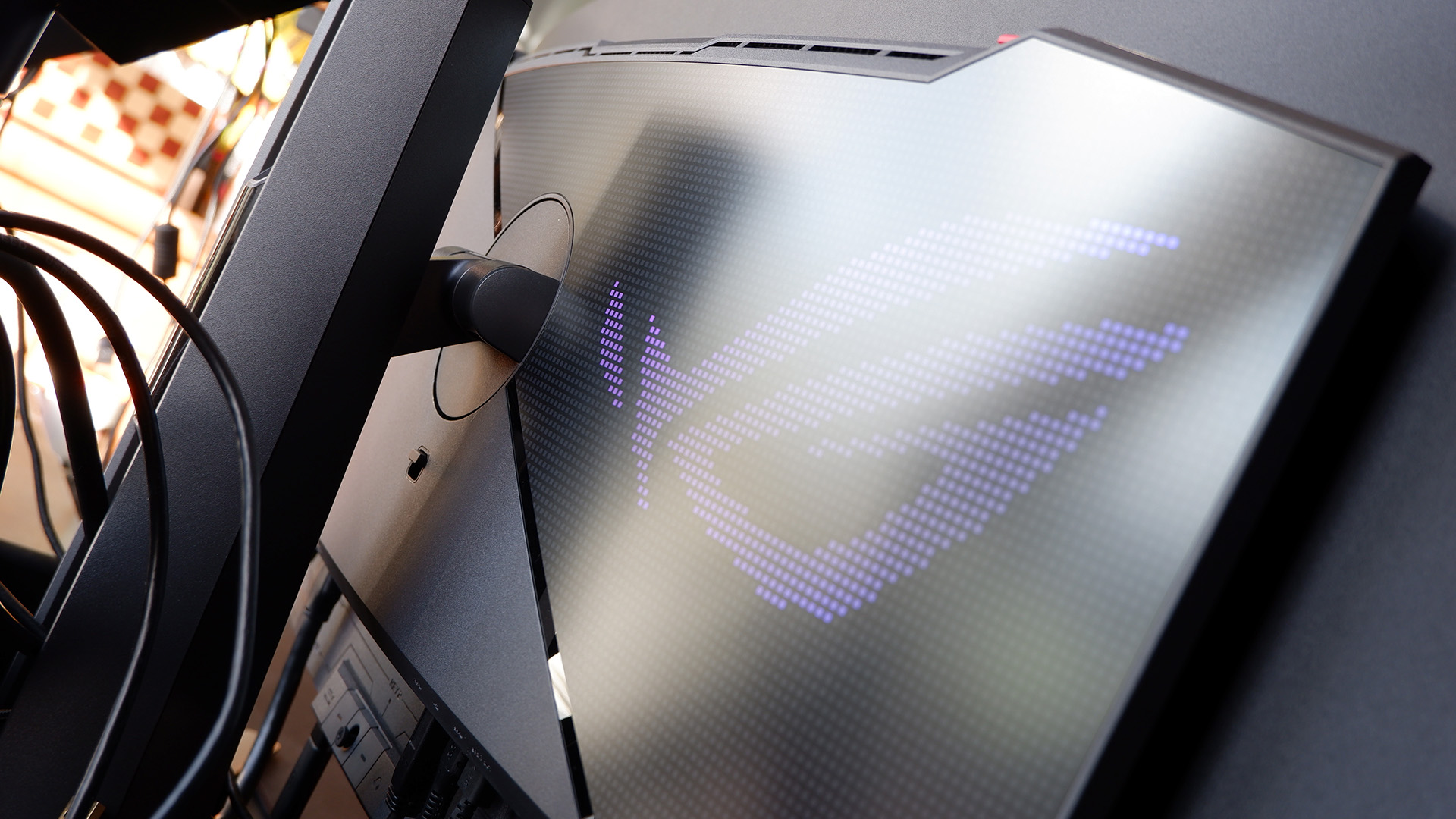
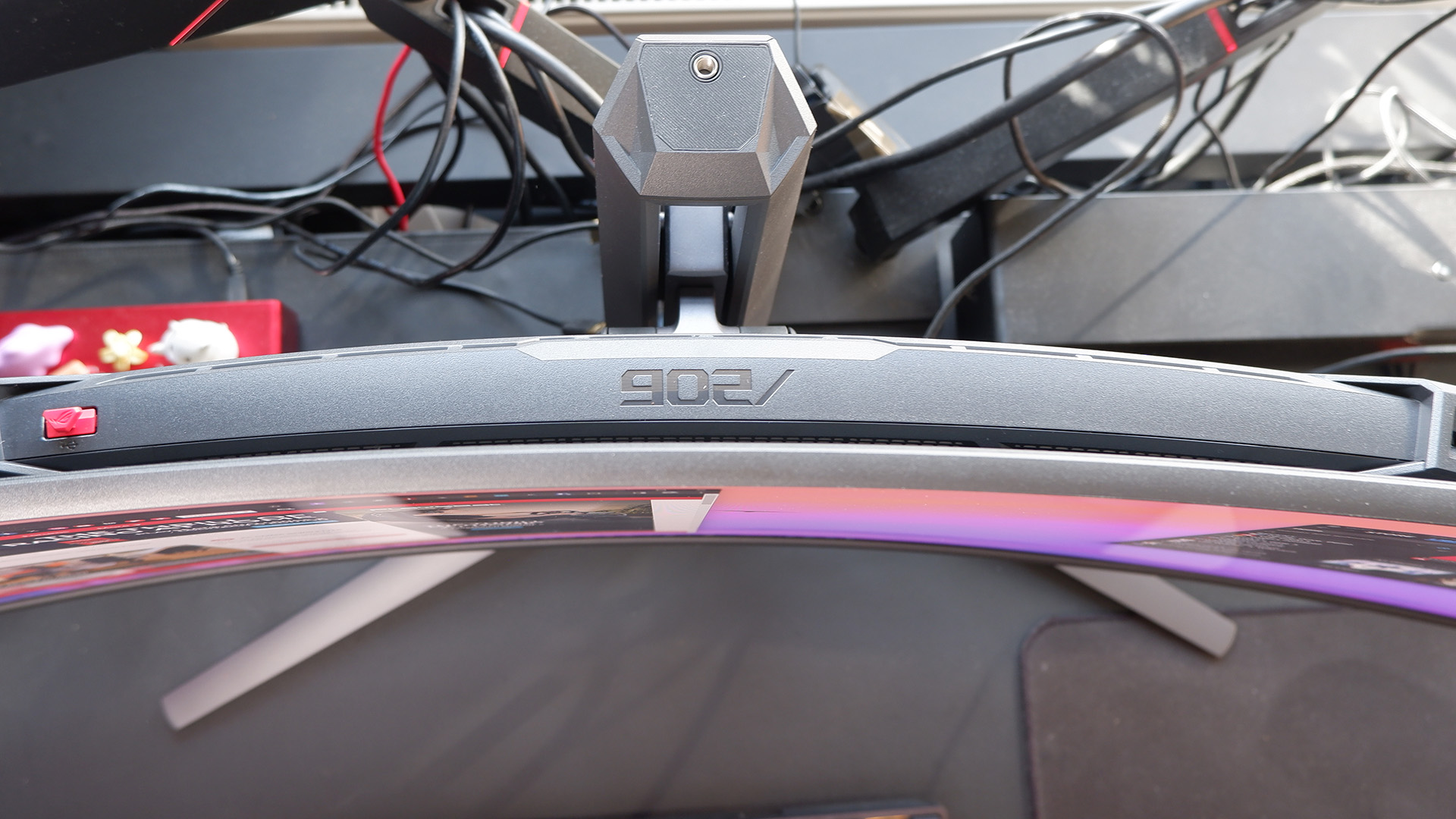
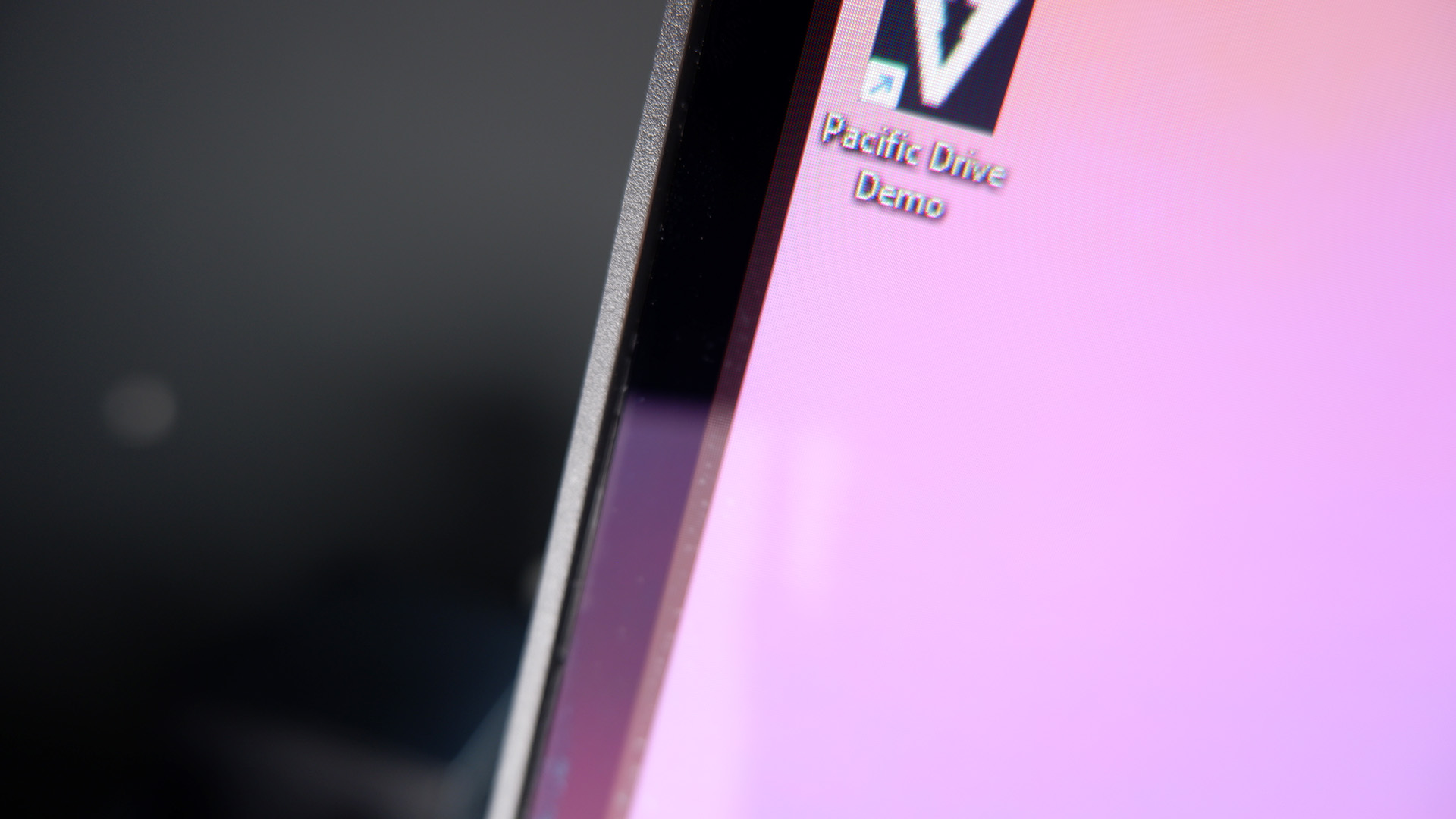
You end up with fringing on most text displayed on the PG49WCD. The best way I can describe it is a very slight chromatic aberration effect to each letter, number, or symbol. It's unfortunately one of those issues that bothers some more than others. I've been gaming and working on this monitor for the past few weeks, and since a lot of my time is spent writing documents and editing text, the text fringing is quite a nuisance.
The PG49WCD even comes with some genuinely useful productivity features. Picture-by-picture, for one, allows for two devices to share half the screen space as if they were independent monitors, and there's also the Smart KVM feature. This allows for the sharing of a keyboard and mouse across multiple devices through the PG49WCD's USB hub. But neither changes the fact I just don't love staring at text on this panel for eight or more hours a day.
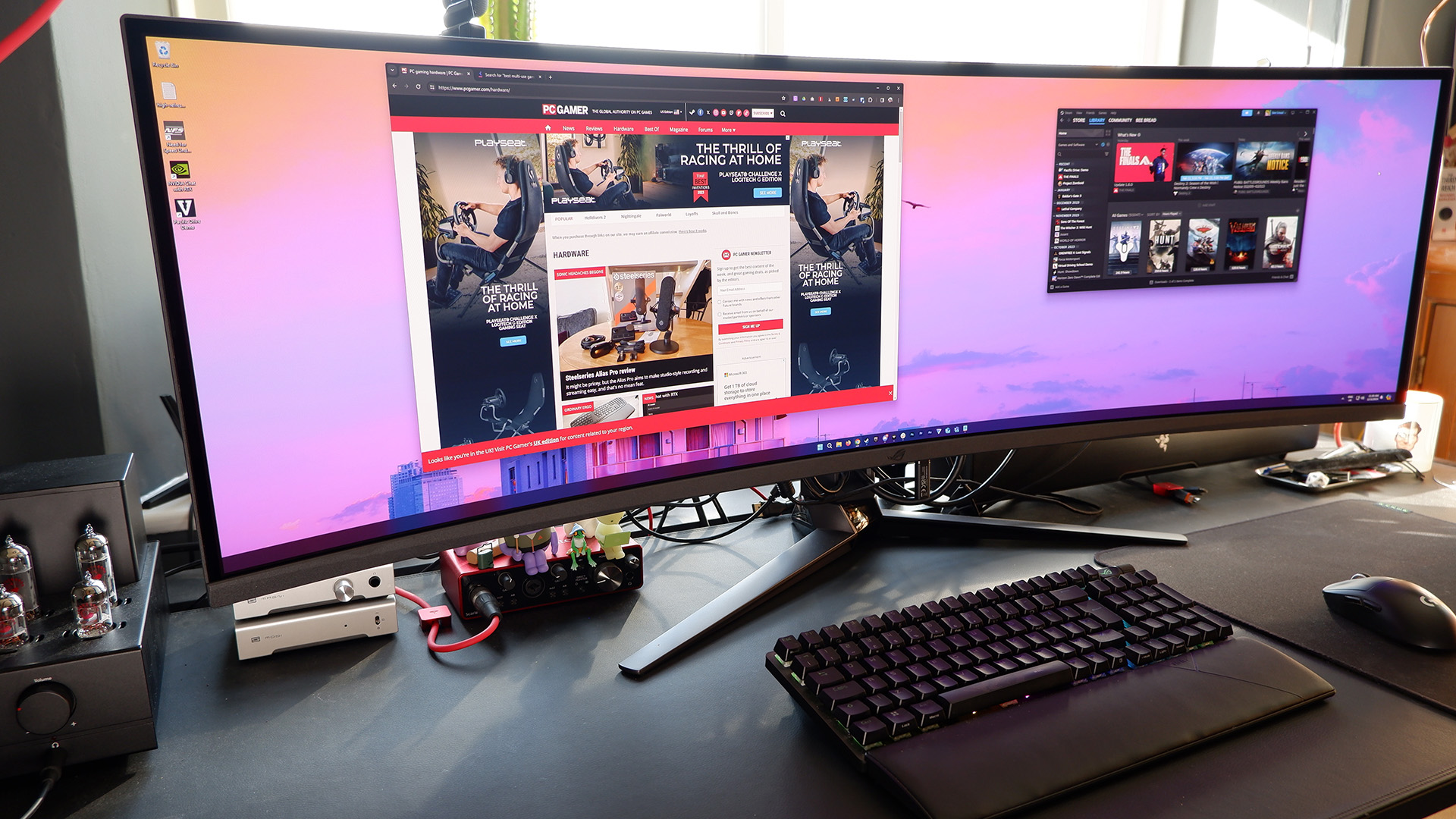
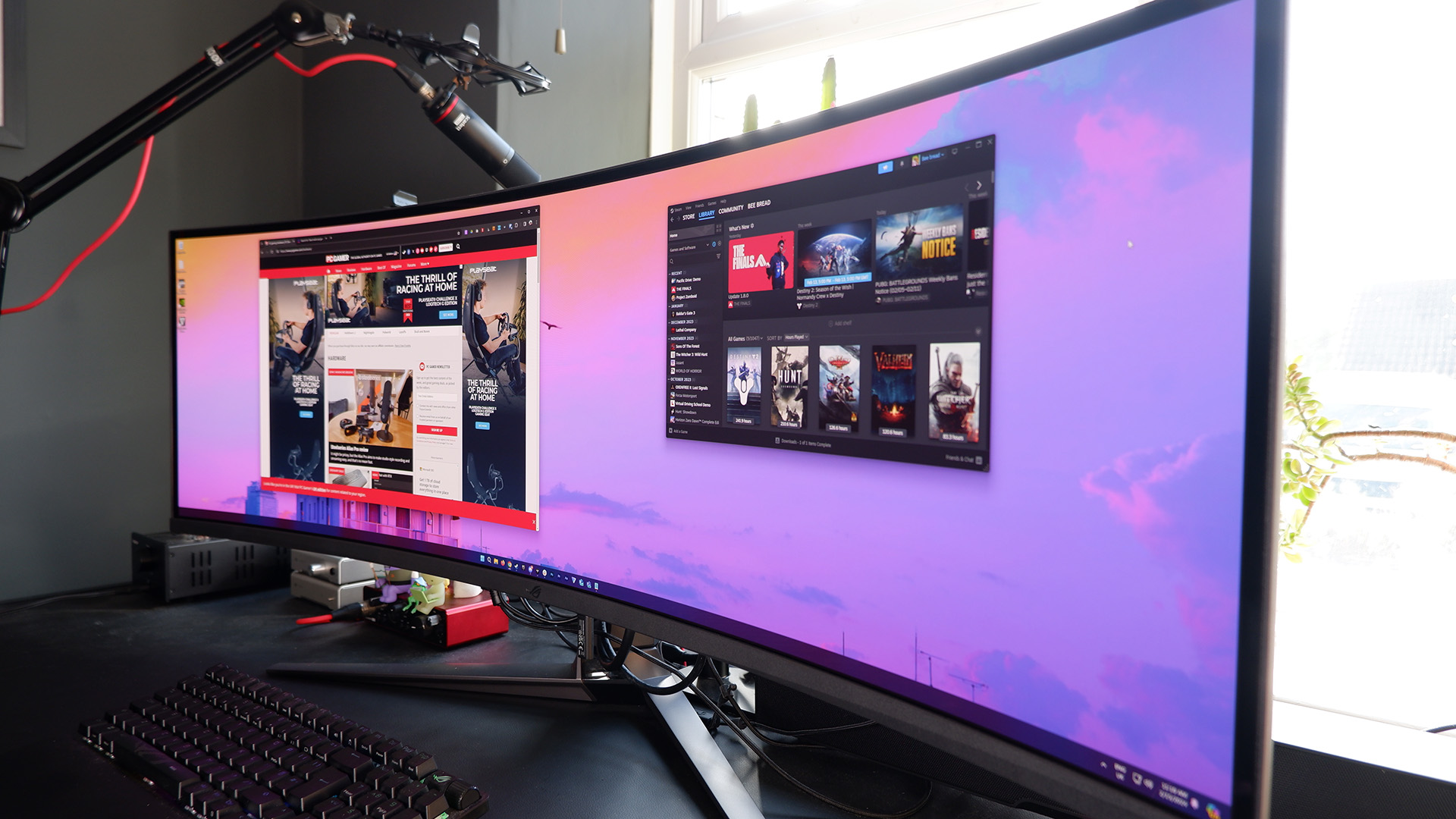
✅ You strictly want a monitor for gaming: If you don't care for the issues around displaying text as you're simply not going to be looking at much for long, there are few gaming monitors that make you say 'woah' quite like this one.
✅ You're chasing immersion: This monitor takes up your entire vision and absorbs you into any game you're playing (providing it supports the full 32:9 aspect ratio, anyway).
❌ You're planning to stare at a lot of spreadsheets: While there's plenty of screen space for navigating Excel or Sheets, I find myself turned off by the slight chromatic aberration effect this screen produces on text of a certain size.
❌ You're worried about burn-in: This is true of any OLED gaming monitor, but burn-in is a real concern and you do have to keep your wits about you to prevent it in the long run. If you prefer a monitor you don't need to worry about, go with something else.
I see it this way: if you are someone who uses their gaming PC to play games after work or school is done, the PG49WCD offers one of the most impressive pure gaming experiences I've ever experienced from the comfort of my desktop. If, like me, you spend most of your time working from the same machine you game on, I'd at least go see if you can view this screen in a store close to your home before you buy it. You might find you don't see what the fuss is about and want the monitor anyways, but you might just realise it's not for you. When you're spending $1,499, it pays to be sure.
There are also other OLED quirks to be aware of. Any OLED is susceptible to burn-in due to the fundamental principle of an organic self-emitting diode, but it's even more likely to happen if you're leaving certain images on the screen for long periods i.e. a Windows taskbar. To try to prevent any damage being done to the screen, the PG49WCD shifts pixels from side-to-side regularly—there being an overprovisioning of pixels before the bezel begins to allow for this—which is noticeable when it occurs while you're on the desktop.
To come down too hard on the PG49WCD for the OLED panel within it would be a mistake, however. That would be entirely ignoring what that OLED brings to the table for gaming. This screen truly produces one of the most engrossing and vivid images I've ever encountered with these two bespectacled eyes—matched only by other absurd OLEDs, like Samsung's Odyssey G9 OLED.
Speaking of which, you can pick up Samsung's model for less right now and it's rated to 240Hz, which makes it the better deal of the two. That's a bit unfortunate for Asus, as I wouldn't say $1,500 feels like a totally unfair price for the PG49WCD—it would be a couple hundred bucks cheaper than the Samsung at its usual MSRP, but the Samsung is currently on sale with $600 off.
So, sure it's not the all-round gaming and working monitor that some are better suited to—check out our list of the best gaming monitors for our recommendations for IPS panels if you're after that—but as an all-out gaming monitor I'm struggling to think of any others that have blown me away quite like this. That's worth something, but at $1,499 I would personally struggle to part with so much cash without the subpixels being on point.







